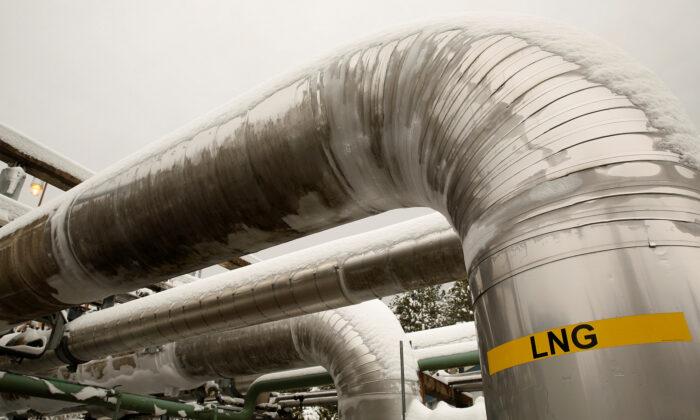U.S. natural gas prices have tumbled this fall since hitting a high over the summer due to increased production, easing cost fears for millions of American households this winter.
Natural gas fell more than 40 percent, after demand nearly reached a 23-year historical high at the end of August, reported The Wall Street Journal.
The price of heating fuel is one of the biggest drivers of inflation and a major factor behind price pressures for manufacturers.The drop in demand is due to milder fall weather, while domestic production and the restocking of gas storage facilities have ramped up since the end of the summer, pushing costs down to the levels of 2021.
Natural Gas Prices Spiked Through August
Natural gas prices had been going up since 2020—and then skyrocketed due to the Russian war in Ukraine, causing a disruption in energy supplies.A long hot summer and drought conditions affected supplies worldwide, while the closure of coal-fueled power plants in the United States, as a consequence of the Biden administration’s green energy policies, have left utilities more dependent on natural gas.
Some market experts are giving sole credit to the efforts of the American energy industry, despite a lack of support from the White House and Congress during the energy crisis.
The war in Ukraine has also forced American consumers to compete with European utility companies and manufacturers for U.S. shale gas in order to replace Russian energy supplies.
However, American producers started to pump a m0re than a 100 billion cubic feet (bcf) of shale gas a day as more production came online, despite the June fire at Freeport LNG’s Texas export terminal, which led to a reduction in the amount of gas available.
Energy traders started to fill more gas into storage tanks and caverns facilities, in time for winter, when it is in high demand.
US Natural Gas Deficit Shrinks in October
At least 571 bcf of natural gas were added to domestic stockpiles between Sept. 9 and Oct. 14, according to The Wall Street Journal.
The deficit in the volume of gas storage fell to 5.5 percent below normal levels last week, as the gas stockpile shortage shrank by more than half, according to the EIA.Meanwhile, prices are expected to be lower on average next year, as more U.S.-produced gas comes online line due to increased drilling and a slowdown in the economy due to inflation rate hikes by the Federal Reserve.
Permian Basin gas producers have pushed prices into negative territory, with some buyers now acquiring natural gas contracts for more than $1 per million British thermal units (BTUs), which previously fetched for more than $8 at the start of last month, according to S&P Global Commodity Insights.Natural gas futures for December at the end of last week’s trading was $5.684 per million BTUs, only 4.75 percent more than a year ago, reported The Wall Street Journal.
Gas-based energy futures fell below $5 for the first time since March, after the markets were shaken by the Russian war in Ukraine.
The Wall Street Journal reported that energy investors are betting on cheaper gas in recent weeks, as they wager for a decline in prices for the first time since the market tumbled in the first months of the pandemic, according to data from the Commodity Futures Trading Commission.





